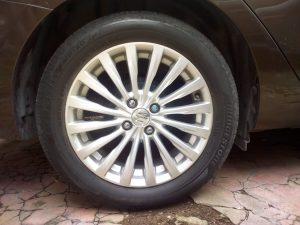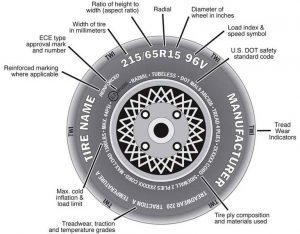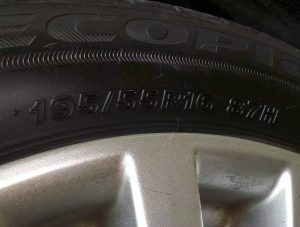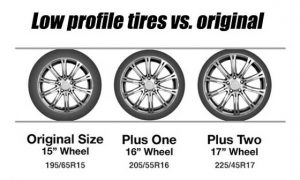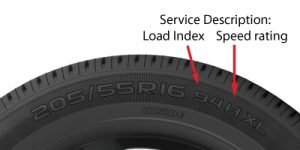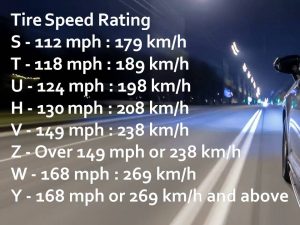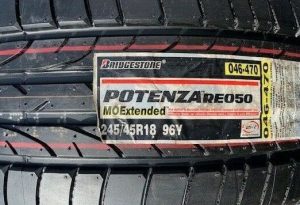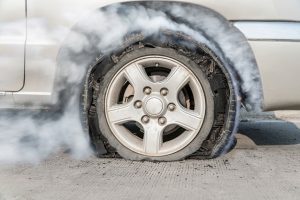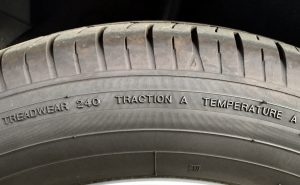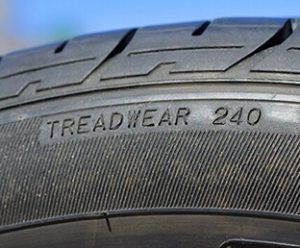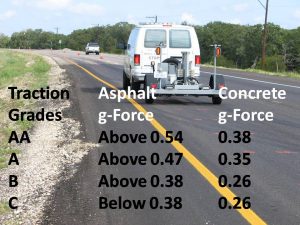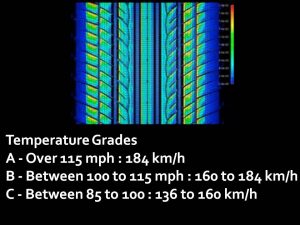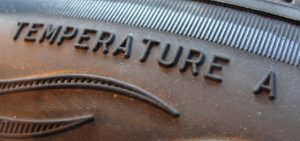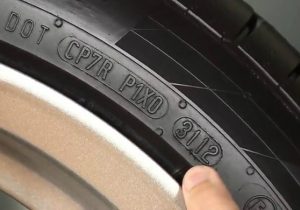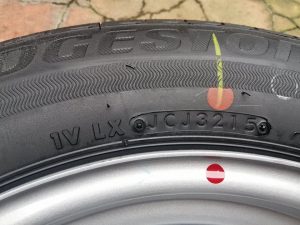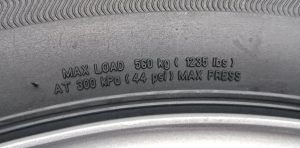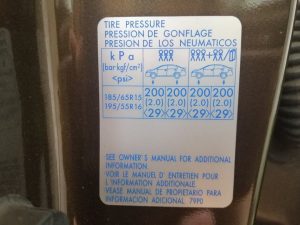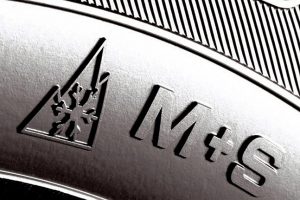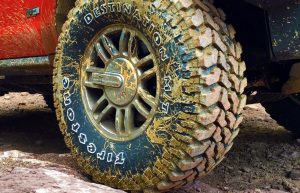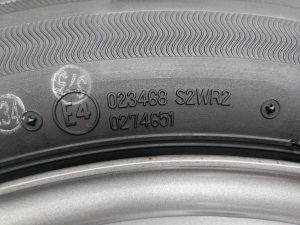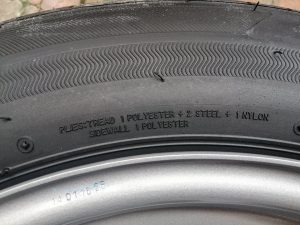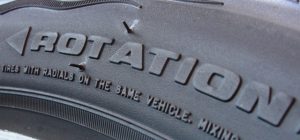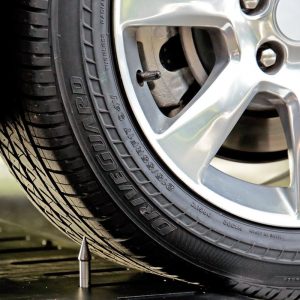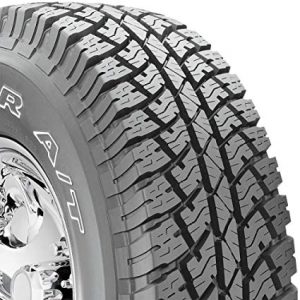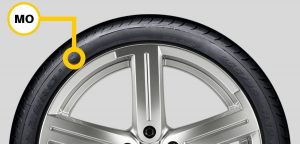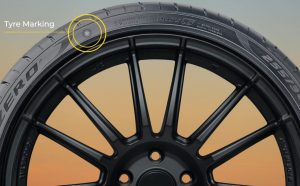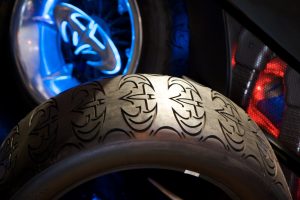To most people, tires are the least sexiest part of a vehicle. Most people merely look at them as a set of black rubber donuts that wrap around a gorgeous-looking wheel. What most people forget to consider is that it’s the tires that provide contact between their vehicles and the road. Without that all-important contact patch provided by the tires, we wouldn’t be enjoying the ride in our vehicles as we have been doing. Have you ever looked at the sidewall of your vehicle’s tires and saw words and numbers embossed on the rubber? Have you ever wondered what these words and numbers mean? Well, if you have, then please allow us to guide you what those alphanumeric markings on your tire’s sidewall actually mean.
Service Description and Tire Size
The service description may not always appear on the tire but it is important to know how it can affect your vehicle. If there is a P on the sidewall, it stands for “Passenger car”. This refers to the American P-metric method of tire sizing. LT stands for “Light Truck”, ST is for “Special Trailer” and T stands for “Temporary”, which is primarily used for small spare tires. If a tire does not have a “P” or another letter in front of the numbers, it is considered a Euro-metric tire, which conforms to the European tire specifications and often carries a different load index than a comparably sized P-metric tire.
On the sidewall of the four Bridgestone Ecopia tires mounted on our 2016 Suzuki Ciaz 1.4 GLX, the tire size is indicated as 195/55R16 87H. The first number (195) refers to the tire’s section width, or the distance from sidewall edge to sidewall edge, measured in millimeters up and over the tire’s tread. Generally speaking, the larger this number is, the wider the tire will be. Thus, the Bridgestone tires of our Ciaz measures 195 millimeters wide.
The second number (55) is the tire’s aspect ratio, or its section height compared to its section width. In our car, the section or sidewall height is fifty-five percent (55%) of the section width or 107.25 millimeters. This number can also be indicative of a tire’s purpose since lower numbers, like 55 or less, mean a short sidewall for improved steering response and better overall handling. This also aids in computing the tire’s overall diameter.
The letter “R” refers to radial internal tire construction that has been the industry standard in passenger-car tires for more than 25 years. Prior to radial tires, most cars came with bias-ply tires, which had a crude construction that made for poor handling. Bias-ply tires, which use a “B” for their description, are still used for certain truck applications while “C” indicates commercial tires for light trucks, such as 185 R14 C.
The third number (16) is the wheel or rim diameter in inches. If you plan on upgrading your vehicle’s wheel size, say from 16 inches to 17 inches, you’ll have to purchase a new set of tires that matches this new diameter.

The fourth number (87) is one of the most important numbers on the tire since it refers to the tire’s load index, which is a measurement of how much weight each tire is designed to support. Simply put, the larger the number, the higher the load capacity. When we look at “87” at the Load Carrying Capacity Tire Chart above, we find that each tire can carry 545 kilograms or a total capacity of 2,180 kilograms for the set of four tires. Since the Bridgestone Ecopia tires are the original tires that came with the Ciaz, their total load capacity is more than the 1,485-kilogram Gross Vehicle Weight (GVW) or the maximum cargo capacity of our car with passengers.
Some vehicles are equipped with tires that have sidewall markings alluding to the load capacity such as LL or Light Load for light usage; SL or Standard Load for normal usage and loads; and XL or eXtra Load that refers to the increased loading capacity where the load index is much higher than a standard-load tire. RF or Reinforced for Euro-metric tires is the same as XL or Extra Load. Thus, it is very important to replace an XL tire only with another XL tire.
The letter after the load index number (H) is the tire’s speed rating, which is the speed at which the tire is designed to run for extended periods. The “H” speed rating of our Bridgestone Ecopia tire means that it can be run safely at speeds of up to 130 miles per hour (mph) or 208 kilometers per hour (km/h) for extended periods. Depending on the its condition, the tire will not immediately explode when it goes above its speed rating but there’s a possibility that it might if it is run above that speed for an extended time. Here’s a the various tire speed ratings and their associated letters:
Please note that the Z rating used to be the highest rating for tires having a maximum speed capability greater than 149 mph or 238 km/h. But as tire technology improved and the top speed of super cars increased, the speed rating ultimately expanded into the W and Y ratings. A ZR may sometimes appear in the size designation but it will also be used in conjunction with a W or a Y. When a (Y) rating is enclosed in parentheses, it means that the tire is capable of speeds in excess of 186 mph or 269 km/h.
The difference between P-metric and Euro-metric tire size nomenclature and their load rating can be confusing and can become a potential problem. For a given size, P-metric tires will have a load index that is one or two points lower than corresponding Euro-metric tires. So if your vehicle came with Euro-metric tires, do not replace them with P-metric tires. However, you can replace P-metric tires with equivalent-size Euro-metric ones because you gain load capacity that way. This is very important because you don’t want your replacement tires to have a lower load index number than the original tires particularly with high-capacity vehicles that ride on small tires such as minivans, MPVs and mini-SUVs. Likewise, aftermarket larger diameter wheels with lower profile tires tend to have less load carrying capacity because they contain less air. And it is the volume of air inside the tire, not the rubber itself or the wheel material, that shoulders the load. Mounting tires with inadequate load and speed rating can overheat the tires and may result in a tire blowout.
Deciphering UTQG Tire Grades
Tires sold in America are required by the U.S. Department of Transportation (DOT) and the National Highway Traffic Safety Administration (NHTSA) to conform to Uniform Tire Quality Grading (UTQG) that encompasses a set of standards for passenger car tires that grades a tire’s treadwear, temperature resistance, and traction, which are assigned by the tire manufacturers based on their in-house test results or tests conducted by an independent testing company. Tire manufacturers are given a 6-month grace period to test actual production tires and once a grade is assigned, it must be branded on the tire’s upper sidewall and printed on its label.
UTQG Treadwear Grades are based on actual road use in which the test tire is run in a vehicle convoy along with standardized Course Monitoring Tires. The test tire’s and the Monitoring Tire’s wear are measured during and at the conclusion of the test. The tire manufacturers then assign a Treadwear Grade based on the observed wear rates. A grade of 100 would indicate that the tire tread would last as long as the test tire, 200 would indicate the tread would last twice as long, 300 would indicate three times as long, etc. Unfortunately, the rating that is of the most interest to consumers is the one that appears to be the least consistent. While the Treadwear Grade was originally intended to be assigned purely scientifically, it has also become a marketing tool used by manufacturers to help position and promote their tires.
UTQG Traction Grades are based on the tire’s straight line wet coefficient of traction as the tire skids across the specified test surfaces. The UTQG traction test does not evaluate dry braking, dry cornering, wet cornering, or high-speed hydroplaning resistance. The Traction Grade is determined by installing properly inflated test tires on the instrumented axle of a “skid trailer” that is pulled behind a truck at a constant speed over wet asphalt and wet concrete test surfaces. Its brakes are momentarily locked and the axle sensors measure the tire’s coefficient of friction, measured in g-Forces as it slides. Since this test evaluates a sliding tire at a constant speed, it places more emphasis on the tire’s tread compound and less emphasis on its tread design. In 1997, the UTQG Traction Grades were revised to provide a new category of AA for the highest performing tires in addition to the earlier A, B and C grades. Today, the grades and their traction coefficients are as follows:
UTQG Temperature Grades refers to the ability of the tire to withstand heat at high speeds and indicates the extent to which heat is generated and/or dissipated by a tire. If the tire is unable to dissipate the heat effectively or if the tire is unable to resist the destructive effects of heat buildup, its ability to run at high speeds is reduced. The grade is established by measuring a loaded tire’s ability to operate at high speeds without failure by running an inflated test tire against a large diameter high-speed laboratory test wheel.
Despite of all the funds spent on testing, branding and labeling the tires sold in the U.S., the UTQG standards have not fully met its original goal of clearly informing consumers about the capabilities of their tires. Maybe it’s because tires are so complex and their uses can be so varied, that the grades don’t always reflect their actual performance in real world use.
DOT and MAX PRESS
The DOT Code is used by the U.S. Department of Transportation (DOT) to track tire production for recall purposes. If a tire proves to be defective, this number helps keep track of where these tires ended up so buyers can be notified of the problem. At the end of the DOT code you’ll find a four-digit number, which is the manufacturing date of the tire. The first two digits stand for the week while the other two are the year. In the sample tire below with the DOT Code 3112, it was manufactured on the 31st week of 2012.
Tires that were manufactured before 2000 are assigned a three-digit number. Thus, a DOT tire code of “127” indicates the tire was made on the 12th week of the seventh year of the decade but it does not indicate whether the year was 1997 or even 1987. Some tires produced in the 1990s may have a small triangle following the DOT number to identify the decade. But any tire that has a three-digit code is history since tire experts recommend the replacement of tires that are six years old or older, regardless of their tread depth. Sometimes, the DOT number is located on the inside of the tire. You should also make a habit of checking the manufacturing date on your vehicle’s tires and spare tire, as well.
Following the DOT Code, the numbers 3215 of our tires mean that it was manufactured on the 32nd week of 2015, making our tires 4 years old and in need of replacement soon.
Maximum Air Pressure refers to the maximum amount of air you can put in a tire before it will burst. The number embossed on the tire wall, like the 300 kPa (kilopascals) or 44 psi (pounds per square inch) is NOT the recommended tire pressure but the maximum cold pressure that our Bridgestone Ecopia can be inflated with to carry its maximum load. The best time to fill up the tires with air is when they’re cold like first thing in the morning or after sitting for a few hours in the shade. The vehicle manufacturer’s optimum or recommended tire pressure can be found on a sticker in the door jam or in your owner’s manual and the recommended pressure is usually between 28 and 35 psi. That number indicates the minimum amount of air pressure needed to support your vehicle and maintain its maximum load-carrying capacity. Any less and the fuel economy and handling will suffer as well as premature tire wear from too much flexing and overloading. When your tires are inflated to the recommended air pressure, their useful life and performance are optimized.
Understanding Other Tire Markings
There are numerous other markings on a typical tire, these may include:
The M+S or Mud plus Snow tire marking system was first introduced to differentiate knobby bias-ply tires from the more common rib treads on early radial car and light truck tires. Over time, M+S became a standard marking to show the tire had some all-season capability compared to summer tires. Unfortunately, it is a very one-dimensional test in that it only measures traction in packed snow and mud. It does not measure traction on ice, slush or traction on cold dry roads. For that reason the M+S symbol falls short in helping fully evaluate winter tire performance expectations in winter driving conditions. To differentiate all-season tires from winter tires, the Rubber Manufacturers Association (RMA) came up with the Mountain/Snowflake symbol. When you see this icon on the sidewall of your tire, it means the tire meets more stringent winter traction performance requirements and has been rated for severe snow service that includes snowy, slippery roads and low temperature or freezing roads.
Tires with M/T, M+T or M&T sidewall markings refer to Mud and Terrain. These tires are designed to perform in mud or on other terrain that requires additional traction such as on rocks, in deeper snow, and in loose gravel. Off-road driving enthusiasts swear by these tires.
An E4 tire sidewall marking means the tire is approved according to the ECE-regulations. The numbers adjacent to the “E4” mark indicates the the country of approval and the ECE approval number of the tire.
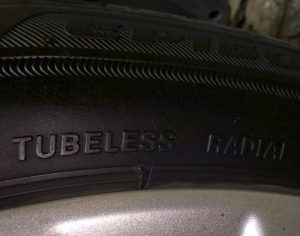
Some tire sidewalls indicate TL, which is short for Tubeless wherein the tires do not use an inner tube as opposed to a TT or Tube Type one.
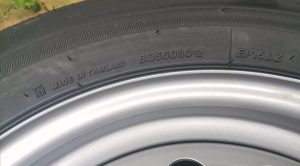
Tires normally indicate their country of origin along with the model and internal product code. The Bridgestone tires that came with our Suzuki Ciaz were Made in Thailand since our car was made there, too. The alphanumeric marking EP15DZ indicates the model while BQ66030-2 indicates the product code of this 15-inch Bridgestone Ecopia EP-150.
The tire sidewall markings above indicate the materials used to manufacture the tire, including layers of polyester, steel and nylon. Some tires use aramid fibers while certain high-performance tires use carbon fiber, kevlar, and other exotic materials.
Some tread designs, especially on high-performance tires, are directional or designed to perform better when driven in a specific direction. Such tires will have an arrow or the word “Rotation” showing which way the tire should rotate when the vehicle is moving forwards. In the absence of arrows, the tire sidewall will have markings such as SFI (Side Facing Inwards) or Inner; and SFO (Side Facing Outwards) or Outer, indicating which way an asymmetric tire should be mounted.
Run-Flat Tires, which are designed for vehicles without spare tires, have reinforced sidewalls that allow the tire to be driven “flat” or without inflation for a distance specified by the manufacturer, usually around 50 miles or 80 kilometers. In the absence of the entire word, run-flat tires have RFT embossed on the sidewalls.

Tread Wear Indicator or TWI is a tire sidewall marking, such as an embossed triangle, located where the tread meets the sidewall and points to the location of the raised wear bars in the tire tread channels. To easily see the tread wear in racing cars, some tire manufacturers install raised bars or even raised colored letters that scrub and fade when the tread is beginning to wear out. This trend is popular in race series where lightning-quick tire changes during pit stops can mean capturing the championship or losing by a millisecond.
The Bridgestone Dueller A/T pictured above comes with ORWL or outlined raised white letters, which is like a rolling advertising billboard for the tire maker. Some vehicles, like American muscle cars from the ’60s and early ’70s look good wearing fat tires with RWL (raised white letters) or OWL (outlined white letters) while some classic cars look elegant wearing tires with WSW or white sidewalls. Most tire makers produce tires with BSW (black sidewalls), while others make tires with BSB (broken serrated bands), VSB (vertical serrated bands) and BSL (black serrated letters).
Lastly, some tires have been homologated for specific vehicles and are embossed with unique markings that indicate what vehicles they are intended for. An MO marking means that these were original tires for Mercedes-Benz while MOE refers to Mercedes-Benz Original Extended run flat tires. A European tire brand has an N- mark next to a number on the tire sidewall to signify that it was designed specifically for Porsche. TPC means original equipment fitment for most General Motors (GM) vehicles, AMx for Aston Martin OE fitments and J for Jaguar original manufacturer equipment. A star on the sidewall of an Italian tire brand means original tires for BMW while the letters RSC inside a circle identify the tire as part of the BMW Runflat System Component.
Now that you know what all those words, numbers and symbols on the sidewall of a tire actually mean, you can now decipher what those embossed markings indicate and, at the same time, have a better understanding of how tires are chosen by the automakers for specific models. If we can only see the sidewall of the tires of the Batmobile, we can get information where billionaire Bruce Wayne gets his tires and what kind of tires they really are.
 Power Wheels Magazine A Notch Above
Power Wheels Magazine A Notch Above

